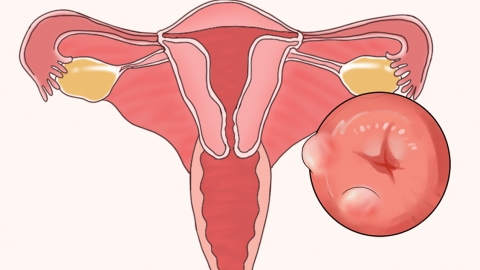How are cervical cysts caused?
Generally, cervical cysts may be caused by natural blockage of the cervical gland ducts, hormonal changes, chronic cervicitis, endometritis, postoperative infections after intrauterine procedures, and other factors. If discomfort occurs, prompt medical attention is recommended. Detailed explanations are as follows:

1. Natural Blockage of the Cervical Gland Ducts
When the mucus secreted by the cervical glands becomes naturally blocked at the gland duct openings, it cannot be discharged and accumulates within the gland, forming a cyst. This is a common physiological mechanism of cervical cyst formation. It is recommended to undergo regular gynecological examinations and maintain personal hygiene while avoiding overly harsh cleansing products.
2. Hormonal Changes
Changes in hormone levels, such as elevated estrogen levels or insufficient progesterone, may stimulate the proliferation of cervical epithelial cells, leading to increased secretions that block the gland ducts and result in cyst formation. Maintaining healthy lifestyle habits, eating a balanced diet, and maintaining an appropriate weight can help regulate hormone levels and prevent cyst development.
3. Chronic Cervicitis
Chronic cervicitis is primarily caused by microbial infections such as bacteria or viruses. Long-term chronic inflammation can block the cervical glands, leading to cyst formation. Symptoms may also include increased vaginal discharge, odor, and contact bleeding. Anti-inflammatory medications such as Kangongyan tablets, metronidazole suppositories, and Baofukang suppositories may be used under medical guidance.
4. Endometritis
Endometritis typically results from infection of the endometrium by pathogenic microorganisms. When the inflammation spreads to the cervix, it may block the cervical gland ducts, forming cysts. Symptoms may also include lower abdominal pain, fever, and increased vaginal discharge. Medications such as cefuroxime axetil tablets, levofloxacin tablets, and Fuyankang tablets may be used under medical supervision.
5. Postoperative Infection After Intrauterine Procedures
Infections may occur after intrauterine procedures such as induced abortion or curettage if postoperative care is inadequate. This may lead to blocked cervical gland ducts and cyst formation. Symptoms may also include fever, irregular vaginal bleeding, and lower abdominal pain. Treatment options include levofloxacin hydrochloride capsules, roxithromycin dispersible tablets, and cefixime dispersible tablets, used according to medical advice.
It is important to maintain good personal hygiene in daily life, regularly clean the external genital area, and avoid using overly irritating cleansing products.




